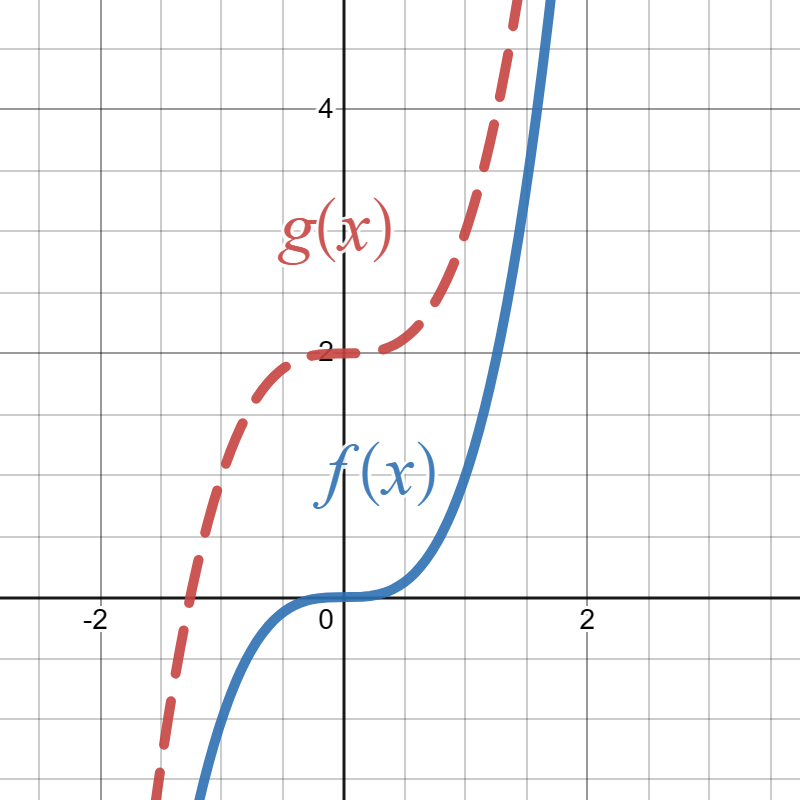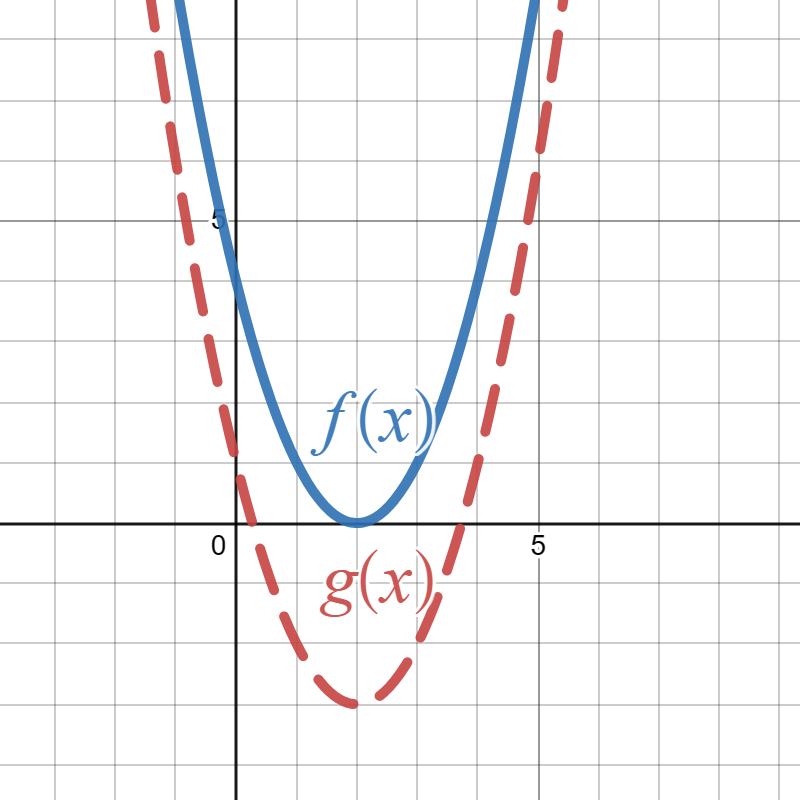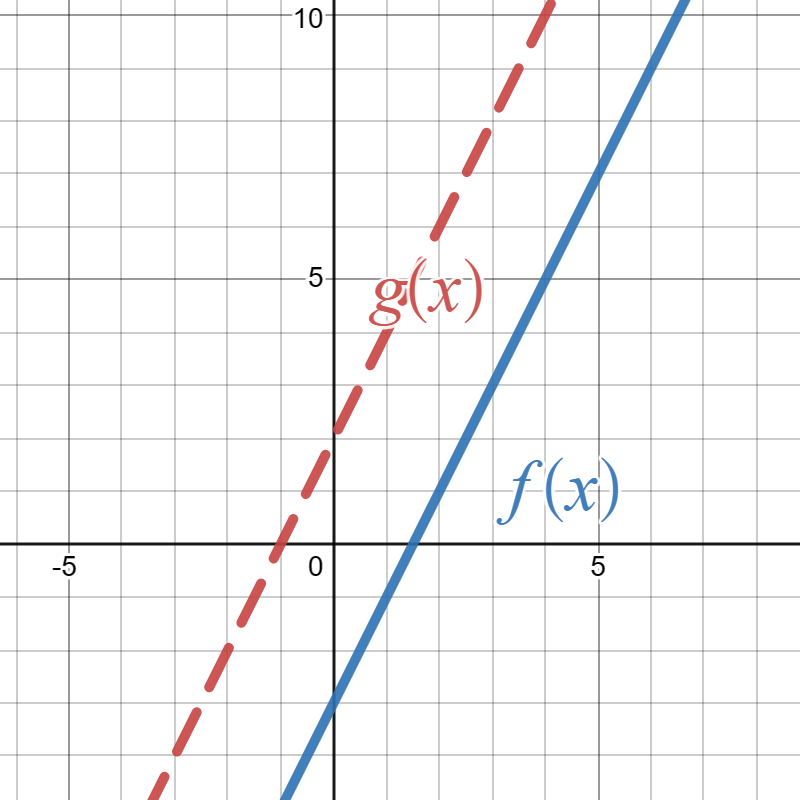Exercises 9.8 Practice Problems
1.
Below is the graph of
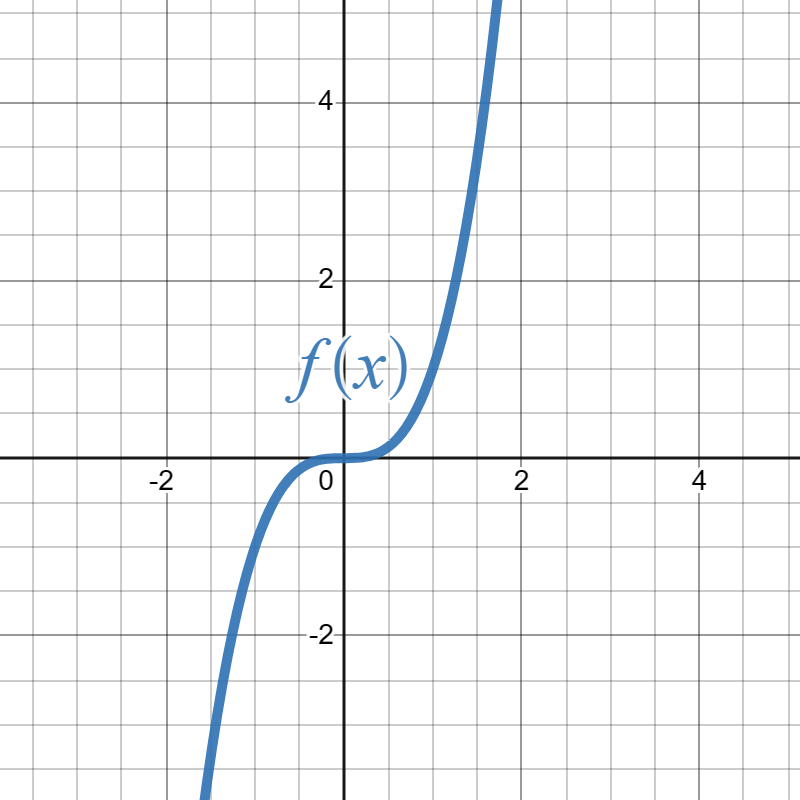
2.
Below is the graph of
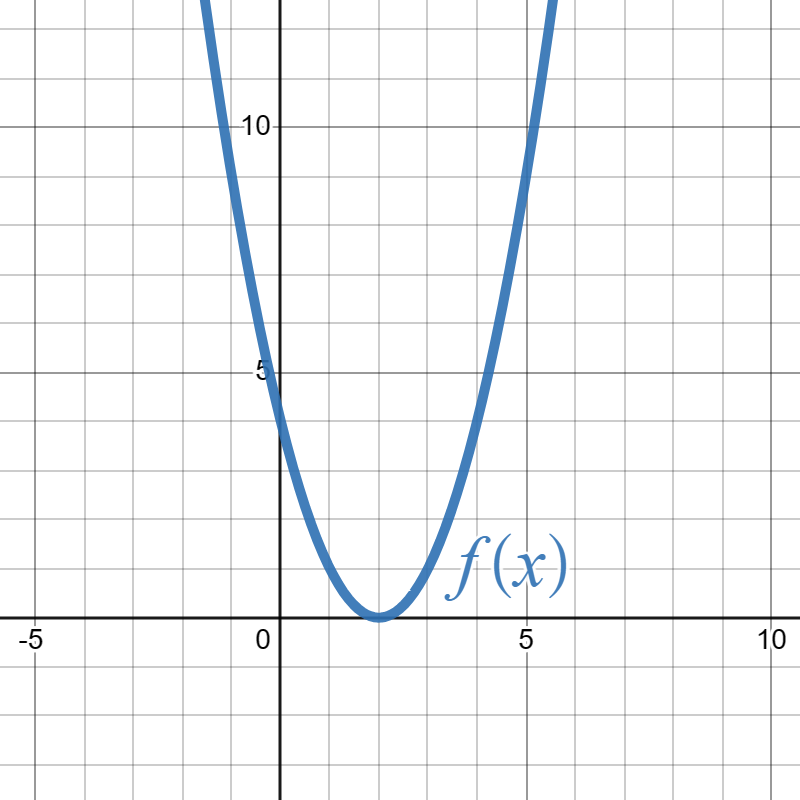
3.
Below is the graph of
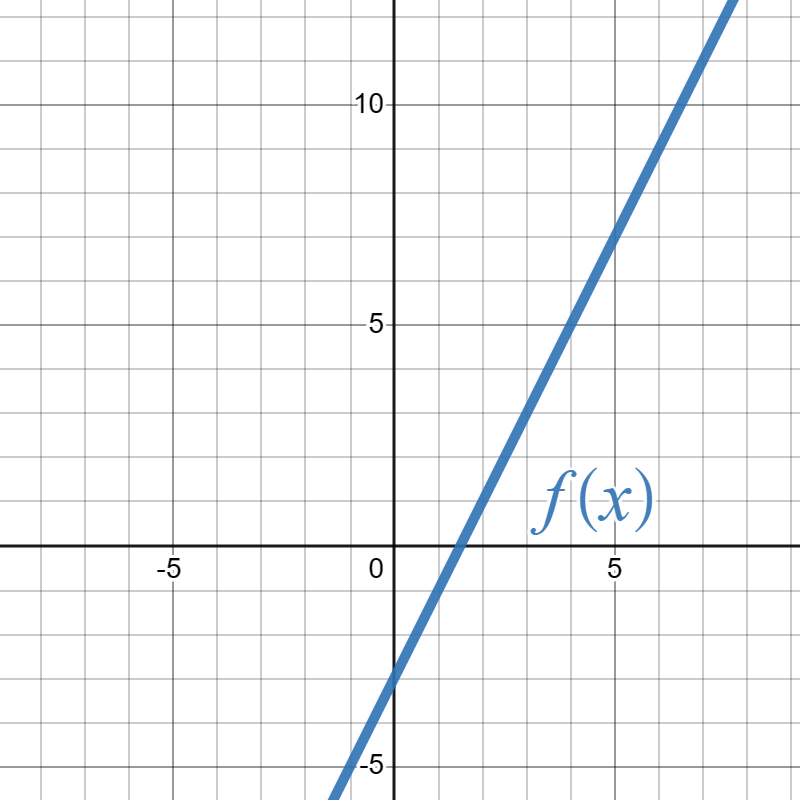
4.
Suppose the solid blue graph below is the graph of
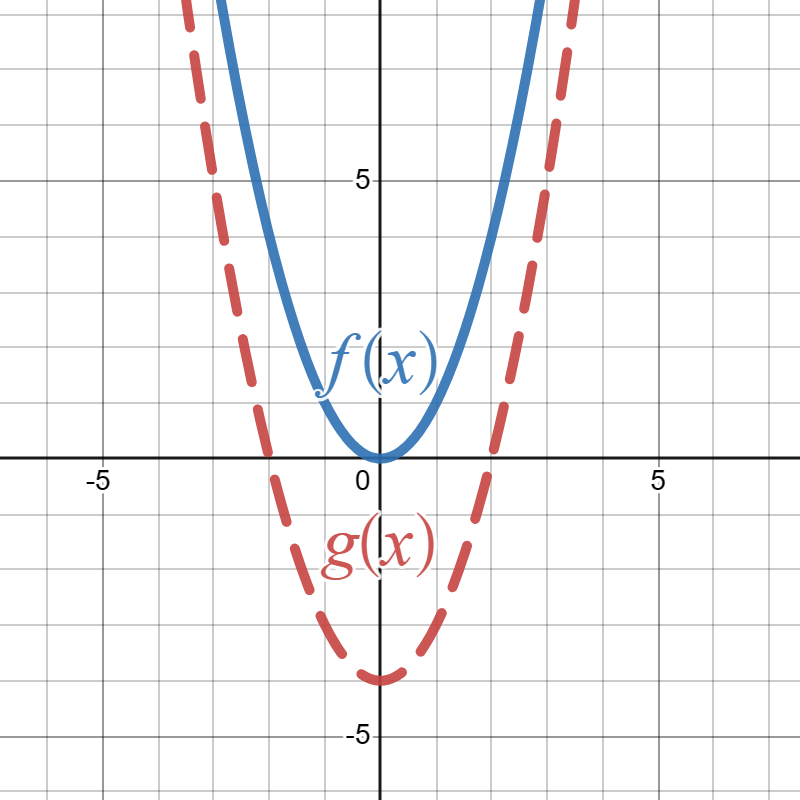
Write a formula for
5.
Suppose the solid blue graph below is the graph of
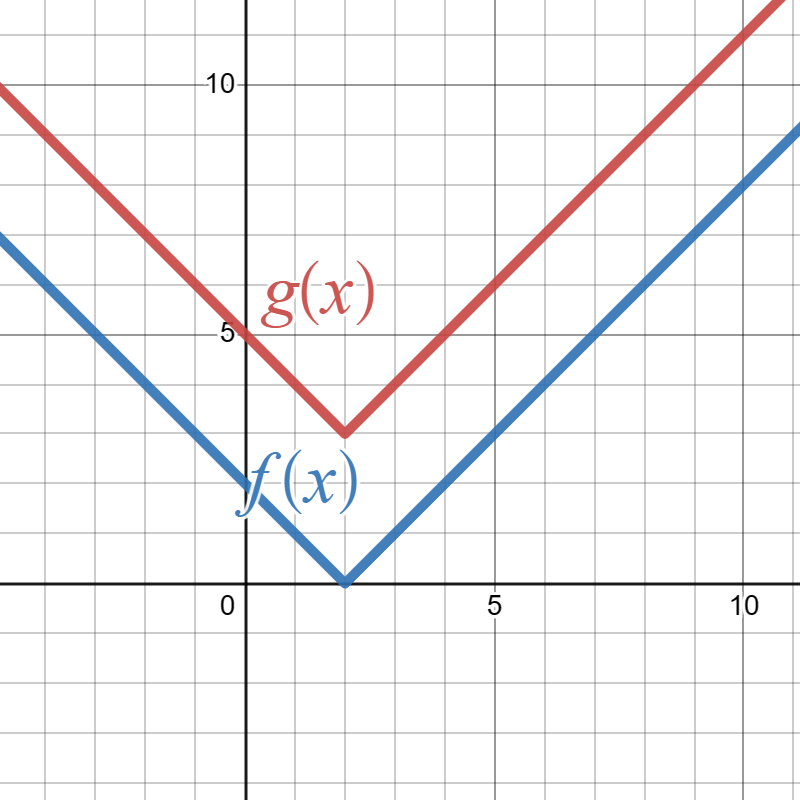
Write a formula for
6.
Suppose
7.
Suppose
Answer.
Shift down by
8.
Suppose
9.
Suppose
Answer.
Shift up by
